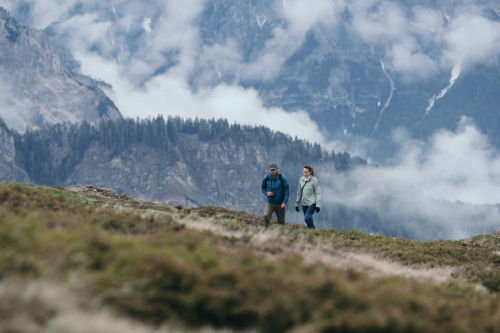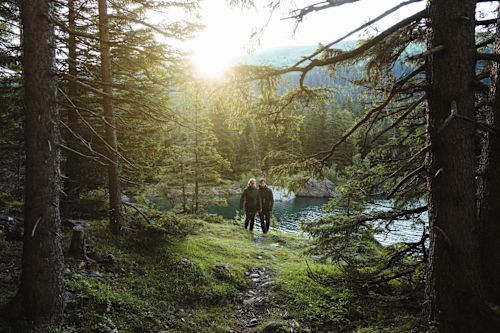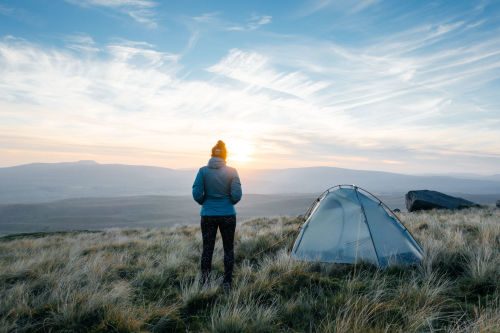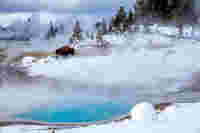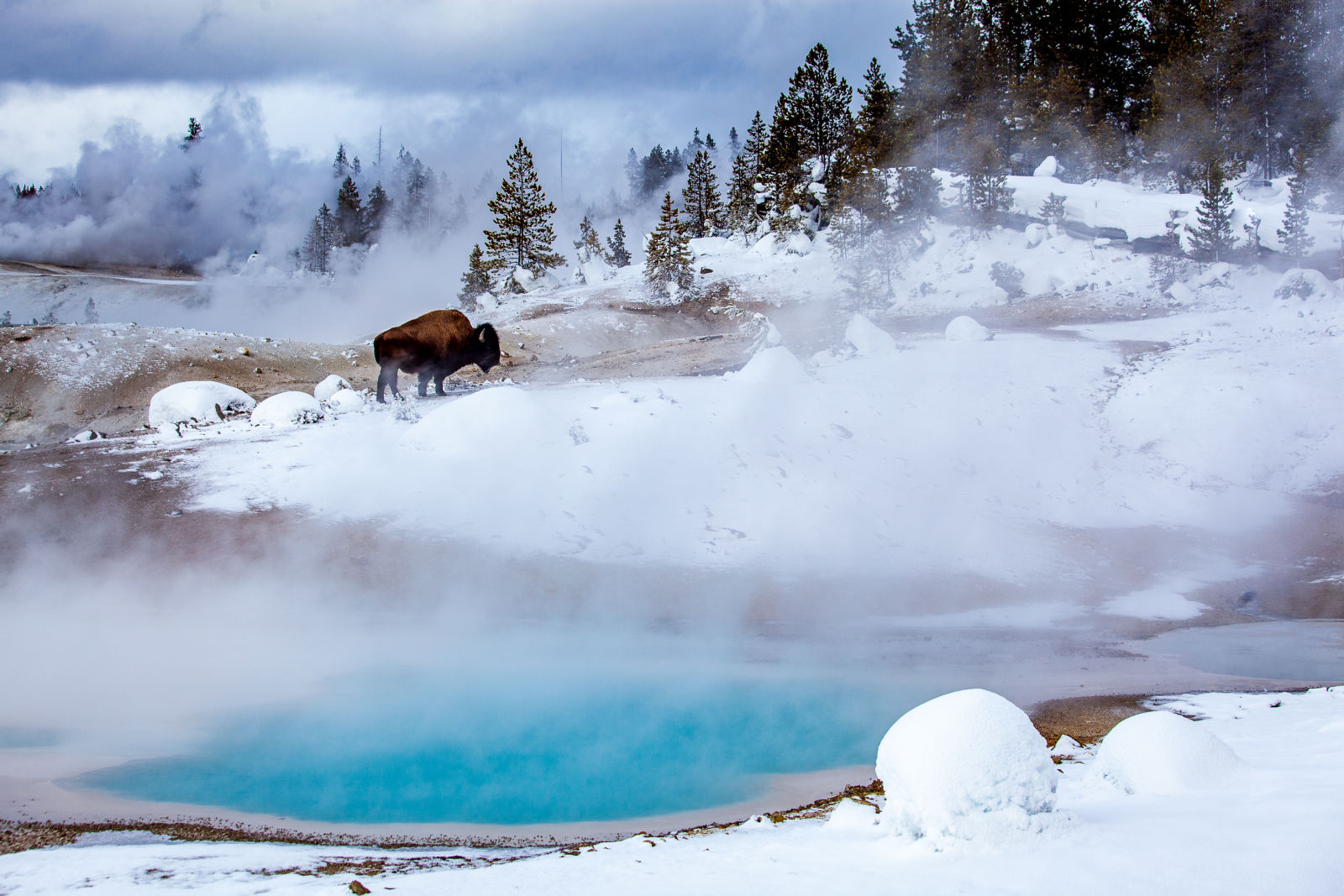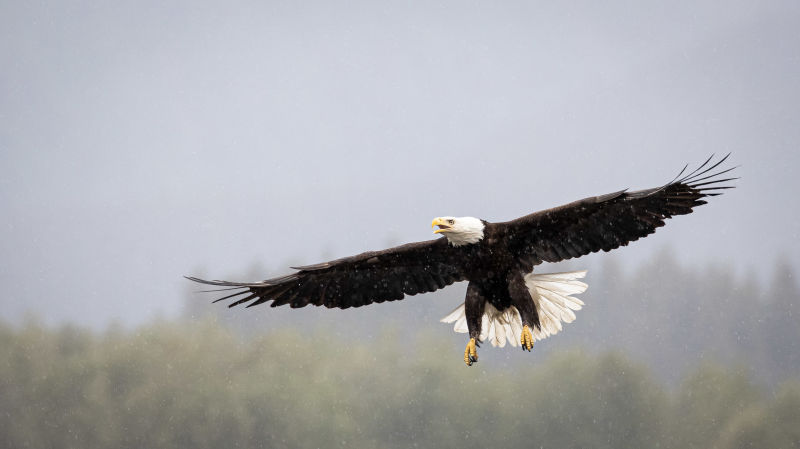Winter in Yellowstone National Park is, to put it mildly, extreme - for both wildlife and photographers. But a few practical tips and survival skills will help you to experience wonderful wildlife watching moments and capture memorable images.

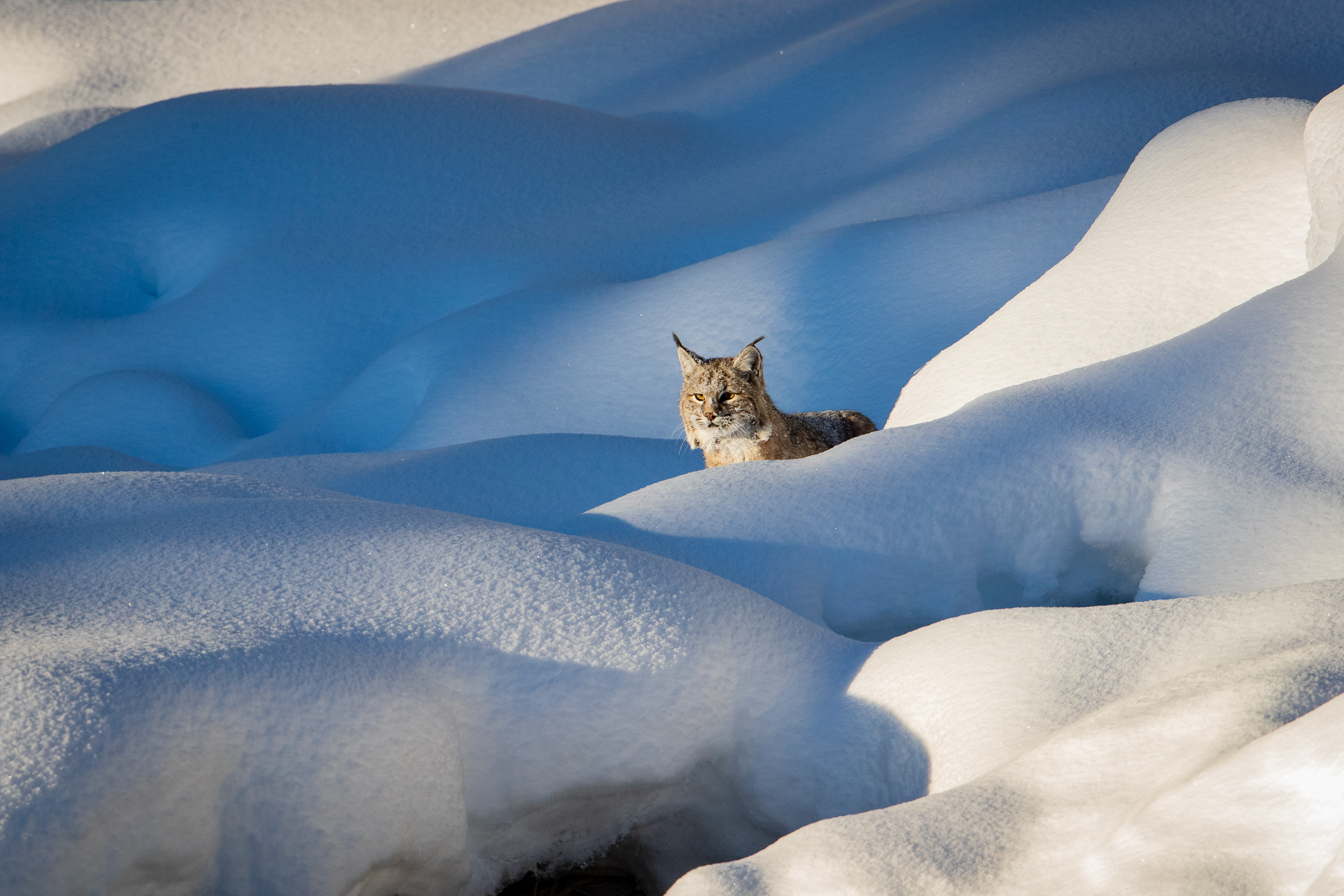

I thrive on winter in the park and the opportunities it gives as the human presence thins and snow yields an uncluttered and mystical backdrop for stunning wildlife images. I’ve been privileged to witness foxes chase their shadows, bison carve paths through shoulder-high snow, bobcats swim icy rivers, otters frolic like children, coyotes stalk their prey and wolves howl in the pale light of sunrise. Such encounters are the moments wildlife photographers live for.
As a permitted Yellowstone photography instructor and tour guide, I love to share my passion for winter wildlife photography with others. So here come a few useful tips on how to take powerful wildlife images in the most frigid winter conditions:
First and most importantly: respect wildlife and their habitat
In Yellowstone, you must stay at least 25 yards away from wildlife - and 100 yards from wolves and bears. This is especially important in winter, as it’s vital not to disturb an animal when its reserves are at their lowest. Study your subjects ahead of time to learn their signs of stress. In bison, for example, these signs include licking their noses or raising their tails. Stressed birds may issue alarm calls. If you see any animal stop feeding or change its behavior in any way because of your presence, you are too close. Move back slowly and quietly, then wait for the animal to settle. If it doesn’t settle, give it even more room or leave.
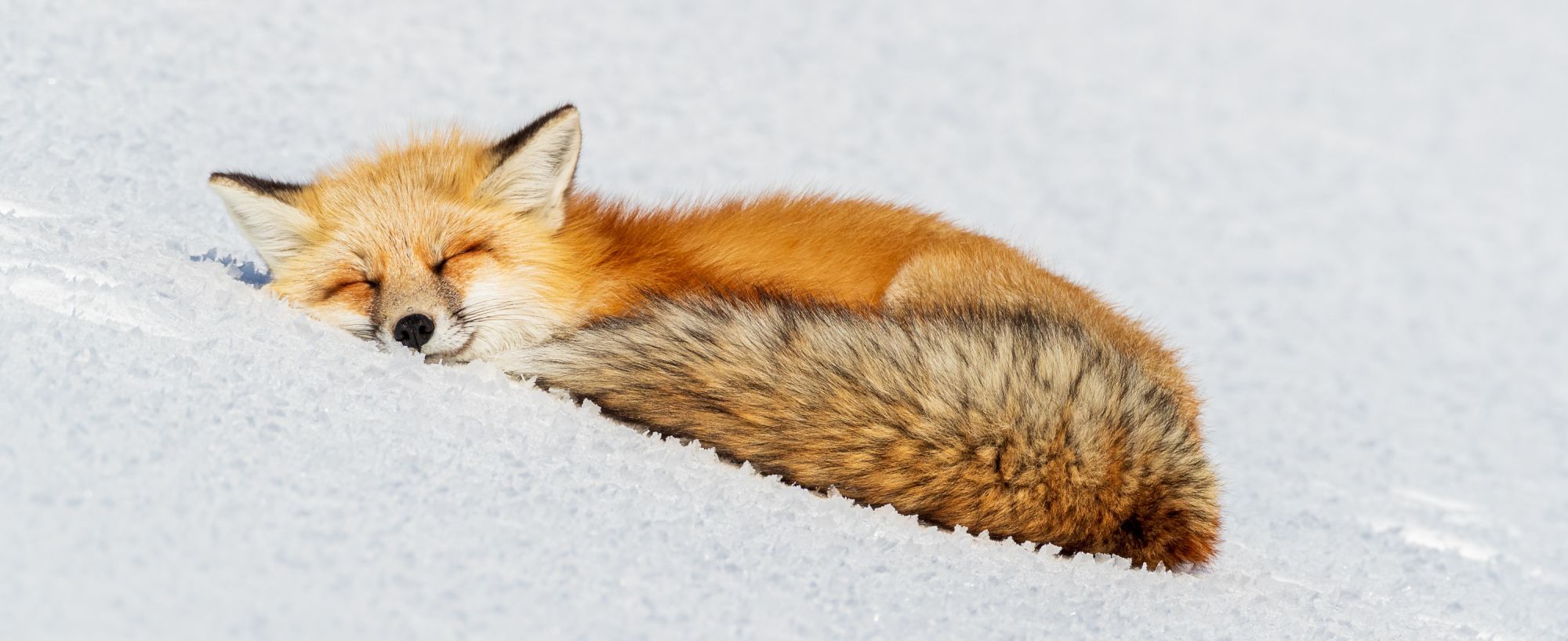
Best viewing spots: Where to find the most iconic species
Winter travel in Yellowstone can be more than challenging. The only road that stays open to regular travel in winter is between Mammoth Hot Springs and the Northeast entrance. Fortunately, that road goes through the famous Lamar Valley, a great spot for photographing winter wildlife. For other locations, however, you’ll need to travel via guided snow-mobile or snowcoach. In the Lamar Valley, you’ll find many of Yellowstone’s most iconic species, including wolves, coyotes, fox, elk, moose, bison and bighorn sheep. For pronghorn, head to the Gardiner Basin. Eagles, trumpeter swans and ducks frequent both the Yellowstone and Madison rivers. Bobcats and coyotes often hunt along the Madison River, and you’ll likely find otters, beavers and foxes along the Yellowstone River in Hayden Valley, which is also a prime spot to photograph bison in deep snow.


Winter tracks tell tales. My number one winter technique for locating wolves, weasels, coyotes, otters and foxes is to follow their tracks. Not on foot, but with high-quality binoculars or spotting scopes. Many of my clients have watched their first wild wolves through my EL 8.5x42 binoculars or my 95-mm spotting scope from SWAROVSKI OPTIK. I carry both whenever guiding and birding, and nearly all serious wildlife watchers in Yellowstone use devices from SWAROVSKI OPTIK because of their unrivalled optical performance. Their light gathering capability gives you a crucial advantage, particularly at dawn and dusk, which is why I can spot and see things others miss.
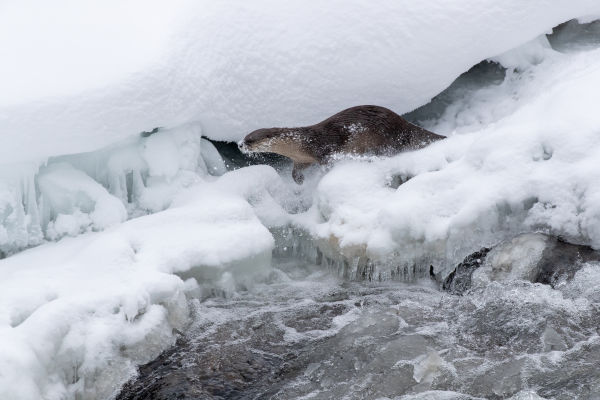
I once spotted
fresh otter slides
in Hayden Valley through my SWAROVSKI OPTIK binoculars which led me to a group of otters. From that sighting, my group was able to follow and photograph three otters romping though nearly 5 miles of fresh powder, fishing along the way and eventually sliding down the steep, 108’ high canyon wall of the Upper Yellowstone Falls. So, the lesson? Learn to identify the snow tracks of species you wish to photograph and use great optics.
What to consider for your equipment?
Camera and lenses
Moving gear from extreme cold into a warm vehicle causes condensation. To prevent this, keep lenses and camera bodies in plastic bags in the vehicle, remove the bags to shoot, then replace them immediately before re-entering so moisture does not form on your lens or inside your camera. If dust or snow gets on your lens, don’t blow: Your breath will make a messy frozen layer.
Batteries
Cold reduces battery life, so always have spare batteries and extra memory cards. Carry them in an interior pocket so they stay warm.
Tripod
Leave a bit of slack in the legs of your tripod before pushing it into snow so the force of the snow doesn’t overextend the legs. And leave an inch or so of each leg exposed to give you something to grab if ice freezes around them.
Metering
Your camera’s metering system assumes everything should reflect 18 percent of the light (middle gray). Snow reflects much more light. So when you are photographing a white background, your camera will try to meter it as if it is gray, not white. The result is an underexposed image that renders pristine white snow as dirty gray. Compensate by adding additional stops of exposure.
Composition
Select a background that will best showcase your subject, such as untracked snow or a steaming creek. Then wait patiently for the animal to enter your frame—and for the magic to begin.
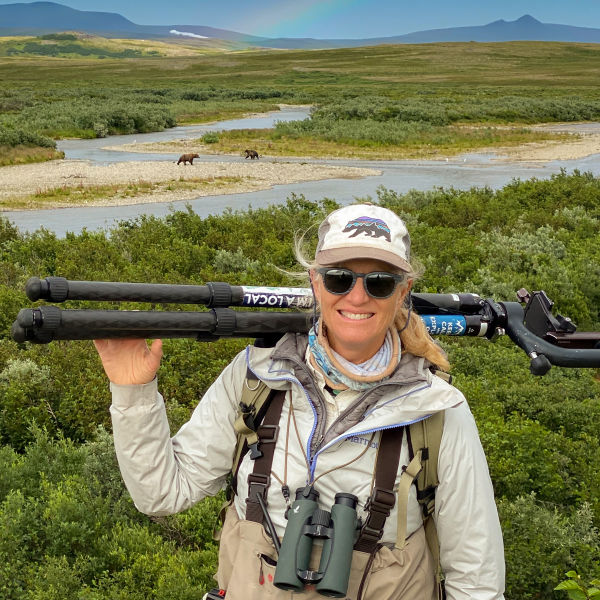
About the author
Cindy Goeddel
Cindy Goeddel is a professional wildlife photographer and naturalist based in Montana, US. She leads photography workshops [goeddelphotography.com] to Yellowstone National Park, Alaska, Africa and Antarctica. Her passion lies in capturing images that convey the spirit of wildlife and inspire peoples to protect this wonderful land and its inhabitants. For wildlife observations and following the animals’ tracks she relies on a pair of EL 8.5 x 42 binoculars and an ATX eyepiece module with a 95-mm objective module.
Text and photographs by Cindy Goeddel
Experience more of her work at www.GoeddelGallery.com

